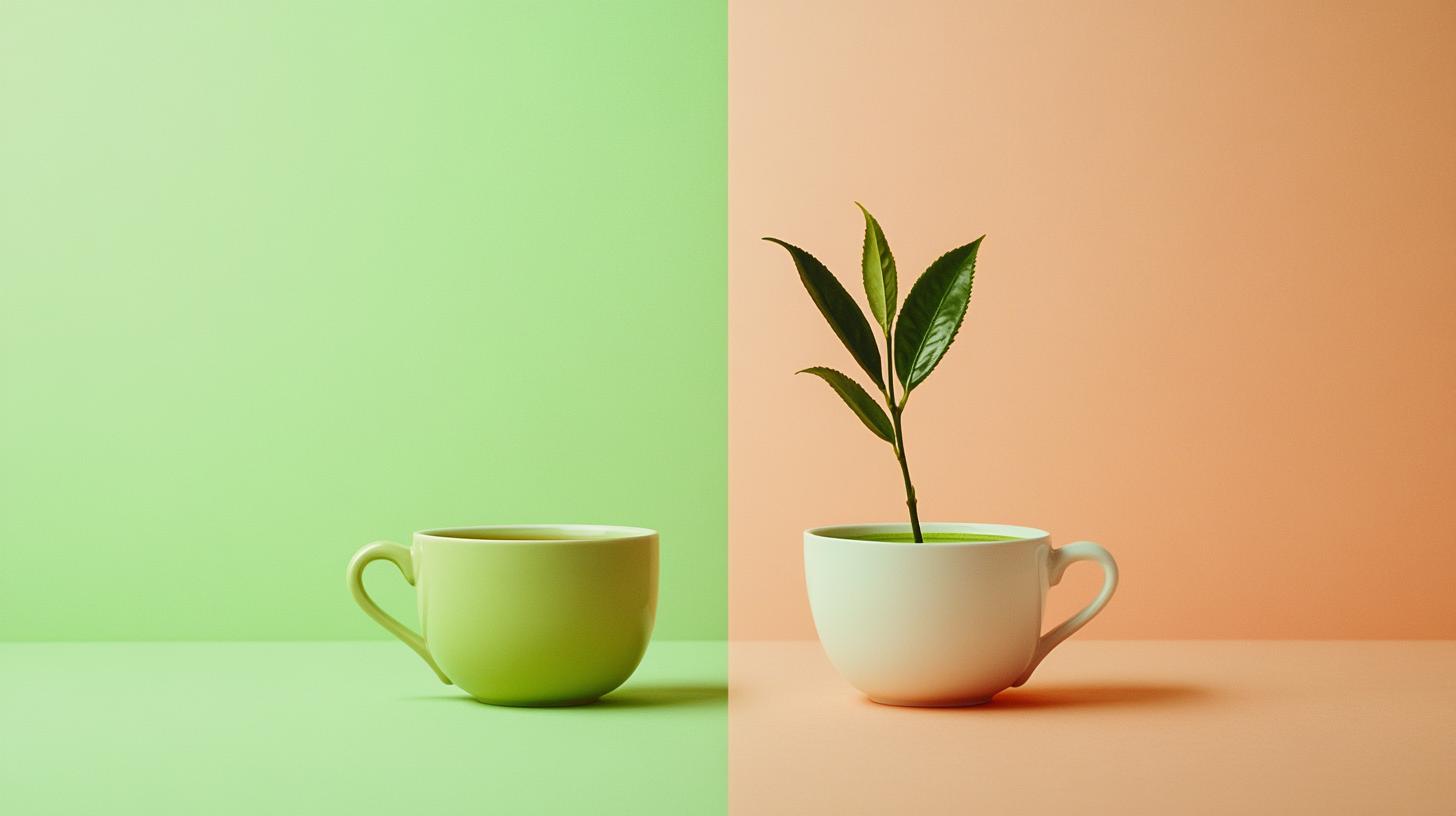Green Tea vs. Matcha: What’s the Difference and Why Matcha Wins 🍵
Introduction
Have you ever wondered why matcha has become the darling of the wellness world while green tea remains a classic favorite? 🤔 Both come from the same plant, Camellia sinensis, but their preparation, taste, and health benefits are worlds apart. In this post, I’ll break down the key differences between green tea and matcha, and dive into why matcha is stealing the spotlight. By the end, you’ll know exactly which one suits your lifestyle and health goals!
What Makes Green Tea and Matcha Different?
At first glance, green tea and matcha might seem like close cousins, but their differences are more than skin-deep. Here’s what sets them apart:
- Growing Process: Matcha is shade-grown for about 3-4 weeks before harvest, boosting its chlorophyll and amino acid content. Green tea, on the other hand, is grown in direct sunlight.
- Preparation: Green tea is steeped in hot water, while matcha is made by whisking powdered tea leaves into water. This means you’re consuming the whole leaf with matcha, not just an infusion.
- Taste: Green tea has a light, grassy flavor, while matcha is richer, creamier, and slightly sweet with a hint of umami.

Why Matcha is a Nutritional Powerhouse
Matcha isn’t just a trendy drink—it’s packed with health benefits that make it stand out. Here’s why I’m obsessed with it:
- Higher Antioxidant Content: Matcha contains up to 137 times more antioxidants than regular green tea, thanks to its whole-leaf consumption. These antioxidants, like EGCG, help fight inflammation and protect against chronic diseases.
- Sustained Energy: Unlike coffee, matcha provides a calm, focused energy boost without the jitters. This is due to its unique combination of caffeine and L-theanine.
- Detoxifying Properties: The shade-growing process increases matcha’s chlorophyll levels, which can help detoxify the body and support liver health.
How to Incorporate Matcha Into Your Routine
If you’re ready to give matcha a try, here are some easy ways to make it part of your daily life:
- Traditional Matcha Tea: Whisk 1-2 teaspoons of matcha powder with hot water for a quick, energizing drink.
- Matcha Latte: Mix matcha with your favorite milk (dairy or plant-based) and a touch of sweetener for a creamy treat.
- Smoothies and Baking: Add matcha to smoothies, oatmeal, or baked goods for a nutrient boost.
Conclusion
While both green tea and matcha offer incredible health benefits, matcha takes the crown for its concentrated nutrients, unique flavor, and versatility. Whether you’re looking for a calming energy boost, a detoxifying drink, or a new ingredient to experiment with, matcha is worth a try. So, why not swap your usual cup of green tea for a bowl of matcha and experience the difference for yourself? 🌱
Call-to-Action: Have you tried matcha yet? Share your favorite way to enjoy it in the comments below, or tag me in your matcha creations on social media! Let’s spread the matcha love. 💚
FAQs About Green Tea and Matcha
Is matcha stronger than green tea?
Yes, matcha is stronger in terms of caffeine and antioxidant content because you consume the whole leaf.
Can I drink matcha every day?
Absolutely! Matcha is safe to consume daily and can be a great addition to a healthy lifestyle.
Does matcha taste bitter?
High-quality matcha has a smooth, slightly sweet flavor with a hint of umami. Lower-quality matcha can taste bitter, so it’s worth investing in a good brand.
What are the long-term benefits of drinking matcha?
Regular matcha consumption can support heart health, boost metabolism, improve focus, and provide long-lasting energy.